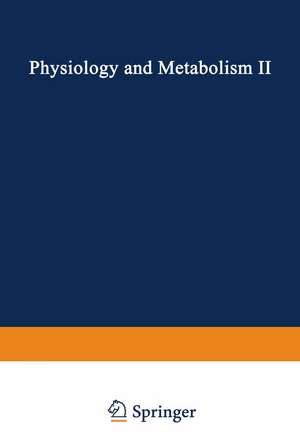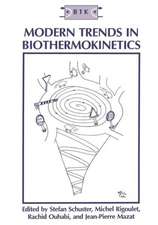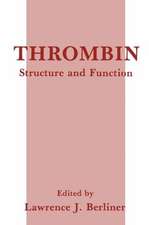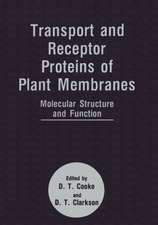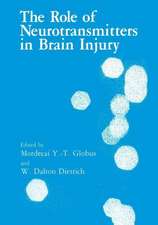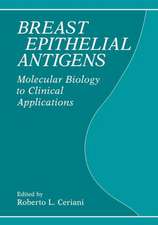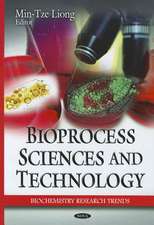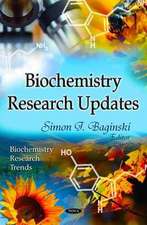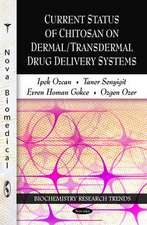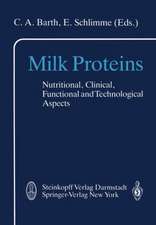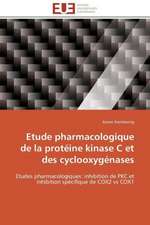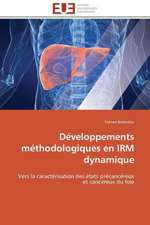The Bile Acids, Chemistry, Physiology, and Metabolism: Volume 2: Physiology and Metabolism
Editat de P. Nairen Limba Engleză Paperback – 2 mar 2012
Preț: 641.85 lei
Preț vechi: 755.13 lei
-15% Nou
Puncte Express: 963
Preț estimativ în valută:
122.83€ • 127.77$ • 101.41£
122.83€ • 127.77$ • 101.41£
Carte tipărită la comandă
Livrare economică 14-28 aprilie
Preluare comenzi: 021 569.72.76
Specificații
ISBN-13: 9781468409000
ISBN-10: 146840900X
Pagini: 344
Ilustrații: XIII, 329 p.
Dimensiuni: 152 x 229 x 18 mm
Greutate: 0.46 kg
Ediția:Softcover reprint of the original 1st ed. 1973
Editura: Springer Us
Colecția Springer
Locul publicării:New York, NY, United States
ISBN-10: 146840900X
Pagini: 344
Ilustrații: XIII, 329 p.
Dimensiuni: 152 x 229 x 18 mm
Greutate: 0.46 kg
Ediția:Softcover reprint of the original 1st ed. 1973
Editura: Springer Us
Colecția Springer
Locul publicării:New York, NY, United States
Public țintă
ResearchCuprins
1 Mechanisms of Bile Acid Biosynthesis.- I. Introduction.- II. Formation of Cholic Acid.- III. Formation of Chenodeoxycholic Acid.- IV. Formation of Other Primary Bile Acids.- V. Conjugation of Bile Acids.- VI. Regulation of Bile Acid Formation.- VII. Formation of Bile Salts in “Primitive” Animals.- References.- 2 Bile Salt Transport Systems.- I. Introduction.- II. Active Transport in the Intestine.- III. Passive Proximal Intestinal Absorption of Bile Salts.- IV. Passive Absorption of Bile Salts in the Lower Gastrointestinal Tract.- V. The Transport of Bile Salts in the Liver.- VI. Renal Transport of Bile Salts.- References.- 3 Bile Salt Metabolism in Man.- I. Introduction.- II. Primary Bile Salts in Man.- III. Pathways for Primary Bile Salt Formation in Man.- IV. Synthesis Rates.- V. Maximum Synthesis Rates.- VI. Relative Synthesis Rates in Liver Disease.- VII. Formation of Secondary Bile Acids in Man.- VIII. Amino Acid Conjugates.- IX. Sulfate Esters.- X. Altered Bile Salt Metabolism with Hepatobiliary Disorders.- XI. Disease Groups.- XII. Portal Cirrhosis.- XIII. Bile Duct Obstruction.- XIV. Hepatitis.- XV. Alcoholic Liver Injury.- XVI. Drug-Induced Jaundice.- XVII. Bile Salts and Pruritus.- XVIII. Pruritus and Pregnancy.- XIX. Lithocholic Acid and Liver Injury.- XX. Dissociated Jaundice.- XXI. Conjugation in Hepatobiliary Disorders.- XXII. Stagnant Loop Syndrome.- XXIII. Bile Salts and Target Cells.- XXIV. Excretion in Urine and Feces.- XXV. Feces.- XXVI. Enteroliths.- XXVII. Therapeutic Agents in Bile Salts.- XXVIII. Anion Exchange Resins.- XXIX. Antibiotics.- References.- 4 Newer Aspects of Bile Salt Metabolism in Intestinal Disease.- I. General Considerations of Experimental Methods Used in These Clinical Investigations.- II. Studies of EnterohepaticCirculation of Bile Salts in Patients with Diseases Primarily Involving the Distal Small Intestine.- III. Studies of Enterohepatic Circulation of Bile Salts in Patients with Diseases Primarily Involving the Proximal Small Intestine.- References.- 5 Bile Acids and the Intestinal Absorption of Fat and Electrolytes in Health and Disease.- I. Introduction.- II. Transport Function of Bile Acids During Fat Digestion and Absorption.- III. Influence of Bile Acids on Water and Electrolyte Transport in the Intestinal Tract 147.- References.- 6 Experimental Cholelithiasis.- I. Introduction.- II. Stasis and Infection.- III. Cholesterol Stones.- IV. Calcium Stones.- V. Vitamin A Deficiency.- VI. Conclusions.- References.- 7 Clinical Implications of Bile Acid Metabolism in Man.- I. Introduction.- II. Synthesis of Primary Bile Acids.- III. Enterohepatic Circulation of Bile Acids.- IV. Quantitation of Bile Acid Metabolism.- V. Physiological Functions of Bile Acids.- VI. Bile Salt Metabolism in Physiological Conditions.- VII. Bile Salt Metabolism in Clinical Conditions.- VIII. Drugs Affecting Bile Acid Excretion.- References.- 8 Effect of Hormones on Bile Acid Metabolism.- I. Introduction.- II. Thyroid Hormones.- III. Pituitary Hormones.- IV. Gonadal Hormones.- V. Adrenal Hormones.- VI. Conclusion.- References.- 9 Enzymes in Bile Acid Metabolism.- I. Introduction.- II. Formation of the Peptide Bond of Conjugated Bile Acids.- III. Peptide Bond Hydrolases of Bile Acid Conjugates.- IV. Hydroxysteroid Oxidoreductases and Related Enzymes.- V. Conclusion.- References.- 10 Action of Hypolipidemic Drugs on Bile Acid Metabolism.- I. Introduction.- II. Nicotinic Acid.- III. Neomycin.- IV. Ethyl p-Chlorophenoxyisobutyrate (Clofibrate, Atromid-S).- V. Cholestyramine.- VI. Other Compounds.- VII. Mitochondrial Oxidation of Cholesterol.- VIII. Conclusion.- References.- 11 Bile Acid Metabolism in Gnotobiotic Animals.- I. Introduction.- II. Studies of Cholesterol Catabolism to Bile Acids in Germfree Animals.- III. Bile Acid Pool Sizes, Turnover Rates, and Physiological Observations in Germfree versus Conventional Animals.- IV. State of Bile Acids in the Intestinal Lumen.- V. Quantitative Fecal Excretion of Bile Acids by Germfree and Conventional Animals.- VI. Qualitative Changes in Bile Acids as a Result of Microbiological Interaction.- VII. Conclusions.- References.- Note Added in Proof.- Author Index.
